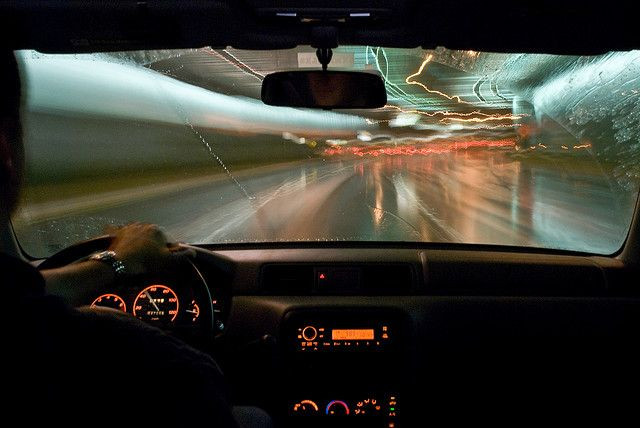New Teen Drivers More Likely To Be Distracted When Listening To Their Favorite Music

Music and driving go together. For some people driving at night, music helps to keep them awake and energetic while at the wheel, while for others, it keeps them entertained when driving long distances. But according to a new study, new teen drivers who listen to their favorite music are more likely to commit errors and be distracted.
Researchers at Ben-Gurion University (BGU) of the Negev in Israel found that 98 percent of their participants, who were young, new drivers, made an average of three mistakes while driving and listening to their preferred types of music. Of those participants, 32 percent had to be warned or told to move quickly, while 20 percent had to be assisted with steering or breaking — in an instrumented learner’s vehicle — in order to avoid a collision.
“Drivers in general are not aware that as they get drawn in by a song, they move from an extra-personal space involving driving tasks, to a more personal space of active music listening,” Warren Brodsky, director of music science research at BGU, said in a statement.
Distracted driving includes a number of things, such as listening to music, talking to passengers or on cell phones, and texting. In 2011, 3,331 people were killed and 387,000 people were injured because of a distracted driver. Drivers under 20 years old are among the largest proportion of distracted drivers, accounting for 11 percent of fatal car crashes.
Brodksy and his colleague, Zack Slor, studied 85 novice drivers during six challenging 40-minute trips. During two of them, the drivers were allowed to listen to music of their choosing; another two sessions involved listening to soft rock, light jazz, and easy listening, and the last two involved no music at all.
The researchers also found that 92 percent of participants still made errors, which included speeding, tailgating, careless lane switching, passing vehicles, and one-handed driving, when driving with no music. But when listening to the softer music, errors became 20 percent less likely.
“Most drivers worldwide perer to listen to music in a car and those between the ages of 16 to 30 choose driving to pop, rock, dance, hip-hop and rap,” Brodsky said in the statement. “Young drivers also tend to play this highly energetic, fast-paced music very loudly — approximately 120 to 130 decibels.”
The findings support a previous study, in which participants were asked to drive 500 miles — 250 miles with no music and then the other 250 miles with certain playlists. Researchers found that those who listened to the Black Eyed Peas song “Hey Mama,” a dance hit, drove the most dangerously, compared to those who listened to the much softer “Come Away With Me” by Norah Jones. The faster beats, the researchers suggested, led the participants to become excited, therefore concentrating more on the music.
Source: Brodsky W, Slor Z. Background music as a risk factor for distraction among young-novice drivers. Accident Analysis & Prevention. 2013.



























